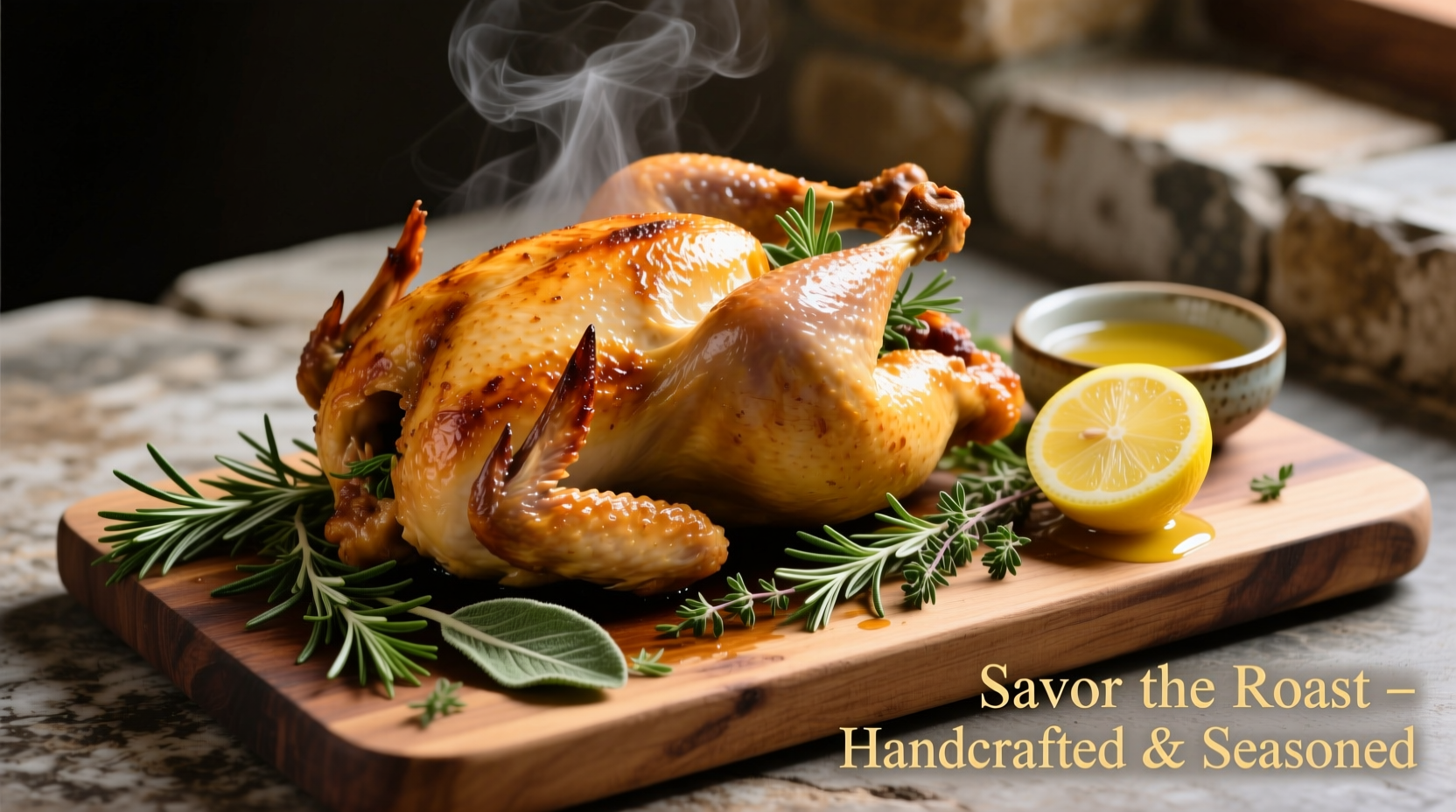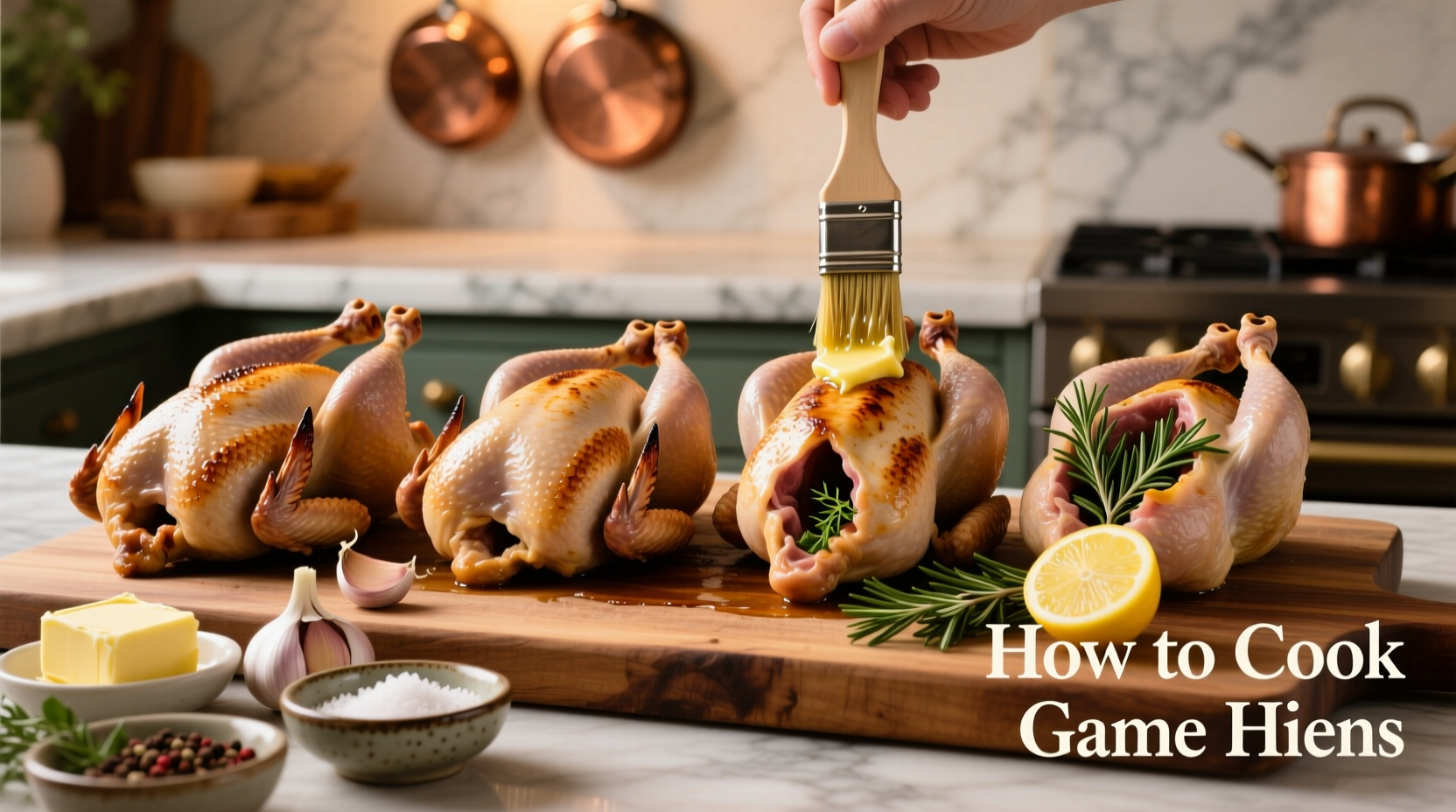Perfectly cooked game hens reach an internal temperature of 165°F (74°C) with crispy skin and juicy meat. This complete guide reveals professional techniques for roasting, grilling, and preparing game hens including exact cooking times, flavor pairings, and common mistakes to avoid.
Game hens, also known as capon or squab in some culinary traditions, offer a gourmet alternative to regular chicken with their delicate flavor and tender texture. Unlike standard chickens, game hens typically weigh between 1-1.5 pounds, making them ideal for single servings with elegant presentation. When cooked properly, they deliver restaurant-quality results that impress without requiring advanced culinary skills.
| Characteristic | Game Hen | Regular Chicken |
|---|---|---|
| Average Weight | 1-1.5 lbs | 3-5 lbs |
| Cooking Time (Roasted) | 35-45 minutes | 75-120 minutes |
| Meat Texture | Exceptionally tender | Firmer, can be tough if overcooked |
| Flavor Profile | Mild, delicate | Stronger, more pronounced |
| Best Cooking Methods | Roasting, grilling, pan-searing | Versatile (roasting, braising, stewing) |
Essential Preparation Techniques for Perfect Game Hens
Before cooking game hens, proper preparation ensures optimal results. Unlike larger poultry, game hens require minimal handling due to their size but benefit from specific techniques that enhance flavor and texture. The USDA Food Safety and Inspection Service recommends thawing frozen game hens in the refrigerator for 24 hours before cooking to maintain food safety (USDA FSIS).
Dry brining stands as the professional chef's preferred method for game hens. Apply 1 teaspoon of kosher salt per pound of meat 12-24 hours before cooking. This process seasons the meat throughout while drawing out excess moisture for crisper skin. For those short on time, a 30-minute salt application still yields noticeable improvement.
Trussing game hens with kitchen twine creates a more uniform shape that cooks evenly. Tuck the wing tips under the body and tie the legs together. This technique prevents the delicate breast meat from overcooking while ensuring the darker leg meat reaches proper doneness.
Optimal Cooking Methods and Timing
Roasting remains the most reliable method for cooking game hens, producing evenly cooked meat with beautifully browned skin. Preheat your oven to 425°F (220°C) and position the rack in the center. Place game hens breast-side up on a wire rack set inside a roasting pan. The high initial temperature creates a perfect sear while the moderate cooking time prevents drying.
| Cooking Method | Temperature | Time | Internal Temp Target |
|---|---|---|---|
| Roasting | 425°F (220°C) | 35-45 minutes | 165°F (74°C) |
| Grilling | Medium-high heat | 25-35 minutes | 165°F (74°C) |
| Sous Vide | 145°F (63°C) | 2-4 hours | N/A (cook then sear) |
| Pan-searing | Medium-high heat | 12-15 minutes | 165°F (74°C) |
Insert an instant-read thermometer into the thickest part of the breast, avoiding bone contact. Remove game hens from heat when they reach 160°F (71°C), as residual heat will carry them to the safe 165°F (74°C) mark during resting. This prevents overcooking, which easily happens with such small birds.
Resting for 10 minutes after cooking allows juices to redistribute throughout the meat. During this critical step, loosely tent with foil to maintain warmth without trapping steam that would soften the crispy skin you worked so hard to achieve.

Flavor Pairings That Elevate Game Hens
Game hens' delicate flavor pairs beautifully with both subtle and bold seasonings. Professional chefs often use a combination of fresh herbs and citrus to enhance without overwhelming. The classic French technique involves stuffing the cavity with lemon wedges, thyme sprigs, and garlic cloves before roasting.
For Mediterranean-inspired preparation, try this simple rub:
- 2 tablespoons olive oil
- 1 tablespoon fresh rosemary, finely chopped
- 1 tablespoon fresh thyme leaves
- 2 minced garlic cloves
- 1 teaspoon lemon zest
- Salt and freshly ground black pepper
Gently loosen the skin from the breast meat and rub half the mixture directly onto the meat. Apply the remaining mixture to the outside skin. This dual-layer seasoning technique ensures flavor penetrates beyond the surface.
Wine-based pan sauces make elegant accompaniments. After roasting, deglaze the pan with ½ cup of dry white wine or light red wine, scraping up browned bits. Add 1 cup of chicken stock and reduce by half. Finish with 2 tablespoons of cold butter for a silky texture that complements the game hen's delicate flavor.
Avoiding Common Game Hen Cooking Mistakes
Many home cooks make critical errors when preparing game hens that compromise results. Understanding these pitfalls ensures perfect outcomes every time:
Overcooking represents the most frequent mistake. Due to their small size, game hens require significantly less time than regular chickens. Set a timer for 30 minutes and check early—most game hens cook in 35-45 minutes total.
Incorrect temperature causes uneven cooking. Roasting at too low a temperature (below 375°F/190°C) results in soggy skin, while temperatures above 450°F (232°C) burn the exterior before interior cooks through.
Neglecting to rest leads to dry meat. The brief 10-minute resting period allows proteins to relax and juices to redistribute. Cutting immediately after cooking releases precious moisture onto your cutting board.
Serving Suggestions for Elegant Presentation
Game hens naturally serve as elegant centerpieces. For formal occasions, present whole birds on a platter with roasted vegetables. For casual meals, slice vertically down the breastbone and arrange halves fanned out on individual plates.
Complementary side dishes include:
- Roasted baby potatoes with rosemary
- Sautéed green beans with almonds
- Wild rice pilaf with dried cherries
- Haricot verts with lemon vinaigrette
The historical evolution of game hen preparation reveals interesting culinary shifts. In medieval European cuisine, small birds were often spit-roasted over open flames. By the 19th century, French chefs developed the technique of barding (wrapping in fat) to prevent drying. Modern culinary science has refined these methods through precise temperature control and understanding of meat chemistry.
When selecting cooking methods, consider your specific context. High-heat roasting works best when entertaining multiple guests, while sous vide followed by quick sear suits special occasions where timing precision matters. Grilling provides excellent flavor for summer meals but requires careful monitoring to prevent flare-ups on such small birds.











 浙公网安备
33010002000092号
浙公网安备
33010002000092号 浙B2-20120091-4
浙B2-20120091-4